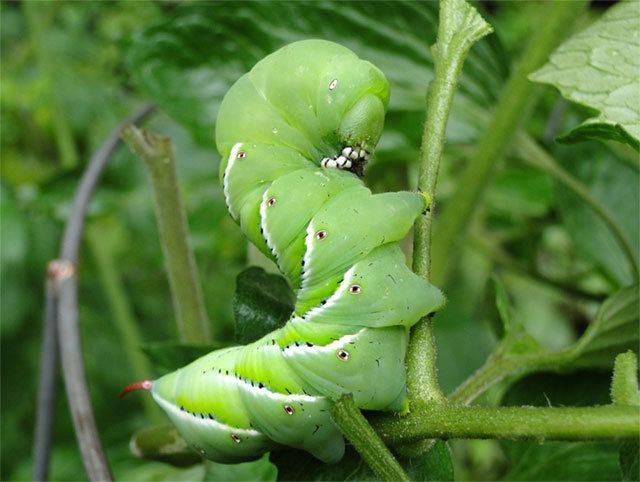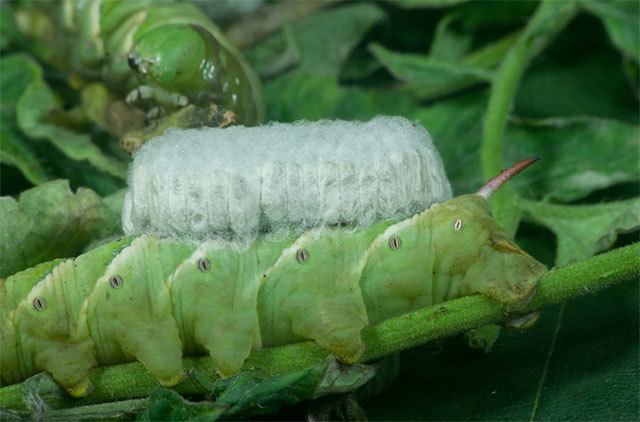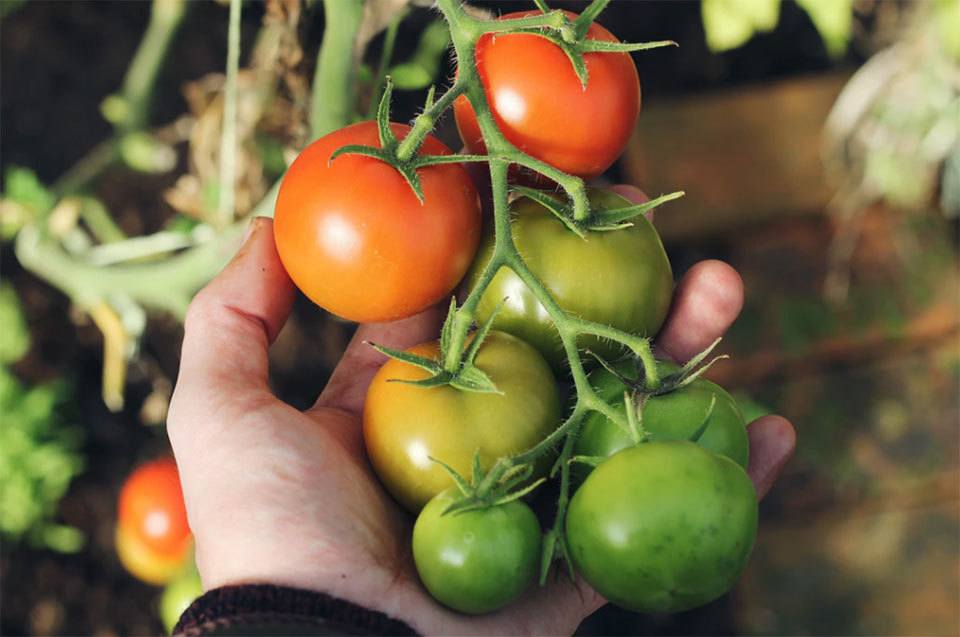Tomato Worms: How to Manage Them
So, you’re thinking about growing a garden of your own. People come to gardening for many different reasons. For some people, it is little more than a relaxing hobby with the benefit of good food or pretty flowers. Being able to take care of something and bring it to life is fulfilling and satisfying. Others may come to it because they want to save money on produce. Not to mention, homegrown vegetables tend to taste better than any other kind.
No matter the reason you are coming to gardening, you want your plants to grow healthy and happy. While most people understand that pests can be a problem when it comes to planting, unless you are a gardening expert, you might not know about the specific pests that may harass your plants, particularly your tomato plants. One of the biggest offenders of ruined tomato plants is the tomato hornworm. This is a large caterpillar that any tomato gardener will tell you to look out for.
What do you do when you have an infestation? This article will give you the tips you need to keep your garden safe from insects, especially the tomato worm.
What Is a Tomato Worm?

The tomato hornworm, also known as a tomato worm, is a pest commonly found on tomatoes, eggplants, tobacco plants and potatoes. These worms eat the leaves, parts of the fruit and the small stems. These pests are highly destructive to the crops that they infest. What makes them even more frustrating for farmers and growers is that they are difficult to see. Their green coloring is a protective measure to keep them camouflaged with the plant. Generally, growers notice the damage to the crops before they notice the worms. This damage is usually easier to identify in the midsummer through the end of the season.
When you do see them, they are very clearly caterpillars. They are about 3 to 4 inches long, and while green, they have white strips in a diagonal pattern. They may have a red or black horn on their rear. When full-grown, they are large moths, called the hawk moth in some areas.
Why It Is Important To Manage Tomato Worms
Once you plant tomatoes, you may eventually have to deal with pests. This is something that every gardener thinks about before planting season. Before you start planting, you probably have big plans for how you want to see your tomato plants grow. With fresh vegetables being cost-effective and tastier than supermarket vegetables, it is no surprise that people want their crops to grow to be healthy. Pests can easily shatter this vision, however.
Say that you are on your way to having a beautiful garden and you go out one day, only to find that there are little holes in your leaves, in your stems and even punctures on the fruit themselves. If you have hornworms, then in addition to holes, you’re also going to see brown droppings. With a large infestation, this can destroy your plants. A pest infestation is a gardener’s nightmare.
If you do not manage your pests, you could end up losing your crop. This is why it’s imperative to handle the situation in advance. If you find out that you have tomato worms, you should take care of it right away. The quicker you treat it, the less likely you are to have the infestation spread out of control.
Life Cycle of the Hornworm

Before you begin to deal with your tomato worm problem, it’s important to know a little bit more about them. If you don’t know what you’re dealing with, then fighting against them may prove to be difficult. The truth of the matter is that their life cycle is going to affect you and your garden quite a bit. Without knowing when they lay their eggs, how, and what their life cycle looks like, you might not be able to fend off against them.
The tomato hornworm is technically a larva or caterpillar. The common names for the moth that it turns into are:
Hawk moths overwinter as pupae and emerge in the spring. This is when they mate. They will lay their eggs on the underside of plant leaves. Then, in 4 to 5 days, the hornworm appears. The life cycle of the hornworm is about four weeks until it goes into the soil to pupate and start the cycle over again.
In these four weeks, they can cause extensive damage. Remember that these are large worms and not to be taken lightly. If you have a moth problem, your infestation can become severe quickly.
How to Manage Tomato Worms
So, either you have tomato worms already, or you’re worried about them happening. Pests are common in gardens. No matter if you’re a highly experienced gardener or someone who is just starting out, you most likely are going to run into your share of pests on your journey. If you plant potatoes, tomatoes or eggplants, then you’re probably going to have to deal with the tomato hornworm.
Prevention
If you want to keep from having a tomato worm problem throughout the season, then take preventative measures in advance. One thing that you can do is till the soil before the gardening season and at the end of it. This will kill the larvae and reduce your chances of having hornworms. Another method you can use is to keep wasps around your garden. Wasps will kill hornworms. Often, you may see parasitic wasp larvae on the hornworms. These larvae will eventually destroy the hornworm.
You can also consider getting your tomatoes a companion plant. Some plants will help deter insects and parasites without affecting the growth of your tomatoes. Plants such as basil, dill and marigolds help with the pest problem.
Pick the Hornworms
If you see hornworms, a step that you can take is to pick them off yourself. Tomato caterpillars are large, and once you see them, they are easy and harmless for you to pick up. If you want to get rid of them, go ahead and drop them into a bucket filled with soap and water.
Garden Dust or Insect Spray
You can always go the route of pesticides also. Make sure that you choose something that will not harm your plants. You also need to consider animals and children before any use of pesticides. If you have children or pets, then you should make sure that your options are nontoxic.
Insects
Sometimes you can use other insects to deal with the problem. There are some insects that won’t harm your plants, but they will hurt the hornworms. Some of these insects are as follows:
Now, one thing to keep in mind when using insects is that these generally will attack the eggs. Also, you want to use this method when you don’t have a severe infestation. Severe infestations may not respond as well to this method.
Spot Treatment
In severe cases, using an organic insecticide can be useful. You can use it as a spot treatment, placing it where the infestation is the worst. Use a fast-acting insecticide and put it wherever the insects like to hide.
Diatomaceous Earth
If you want to fight off the hornworms for a long time, then you should use diatomaceous earth. This kills the insects by harming the outer layer of the worm while it is crawling on the powder. If you were to look at diatomaceous earth under a microscope, you would see particles that look like glass. This is what cuts the insects. What’s even better about it is that it is not toxic or poisonous!
When it comes to taking care of your tomato plants, sometimes prevention is the best method. Fortunately, once you are dealing with an infestation, there are several ways to take care of it.
Keep Your Tomatoes Healthy

Think about how you want your garden to look. It doesn’t matter if you’re a professional grower or someone who just started planting tomatoes in your backyard garden. No matter your skill level, there is one thing that you have to keep in mind. Pest can strike anyone. The best way to stop you from having an infestation is to try to prevent the worms from hatching in the first place. However, this isn’t always possible.
What you don’t want to do, though, is to take the tomato worms too lightly. It doesn’t take long for them to ruin your plants. As your tomatoes grow, they need all of the nutrients that they can get, and if worms are tearing apart the stems, leaves and fruit, it’s going to leave little for you. The more worms you have, the more likely they are to multiply later on down the line. This is why you should put forth all of the preventative measures possible and then use other methods to manage them so that your plants can be healthy and strong.